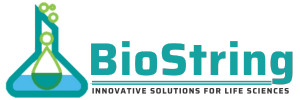Punicalagin has antifungal , antiviral, anti-atherosclerotic, hepatoprotective , anti-obesity., antiproliferative, anti-apoptotic, anti-inflammatory, and antioxidant effects. It can suppress the phosphorylation of MAPK including p38, c-JNK, and ERK, it also has potently inhibiting the activity of fatty acid synthase with half-inhibitory concentration values (IC 50 ) of 4.50μM.
Storage
Wherever possible, you should prepare and use solutions on the same day. However, if you need to make up stock solutions in advance, we recommend that you store the solution as aliquots in tightly sealed vials at -20C. Generally, these will be useable for up to two weeks. Before use, and prior to opening the vial we recommend that you allow your product to equilibrate to room temperature for at least 1 hour.
After Receiving
The packaging of the product may have turned upside down during transportation, resulting in the natural compounds adhering to the neck or cap of the vial. take the vial out of its packaging and gently shake to let the compounds fall to the bottom of the vial. for liquid products, centrifuge at 200-500 RPM to gather the liquid at the bottom of the vial. try to avoid loss or contamination during handling.



Reviews
There are no reviews yet.